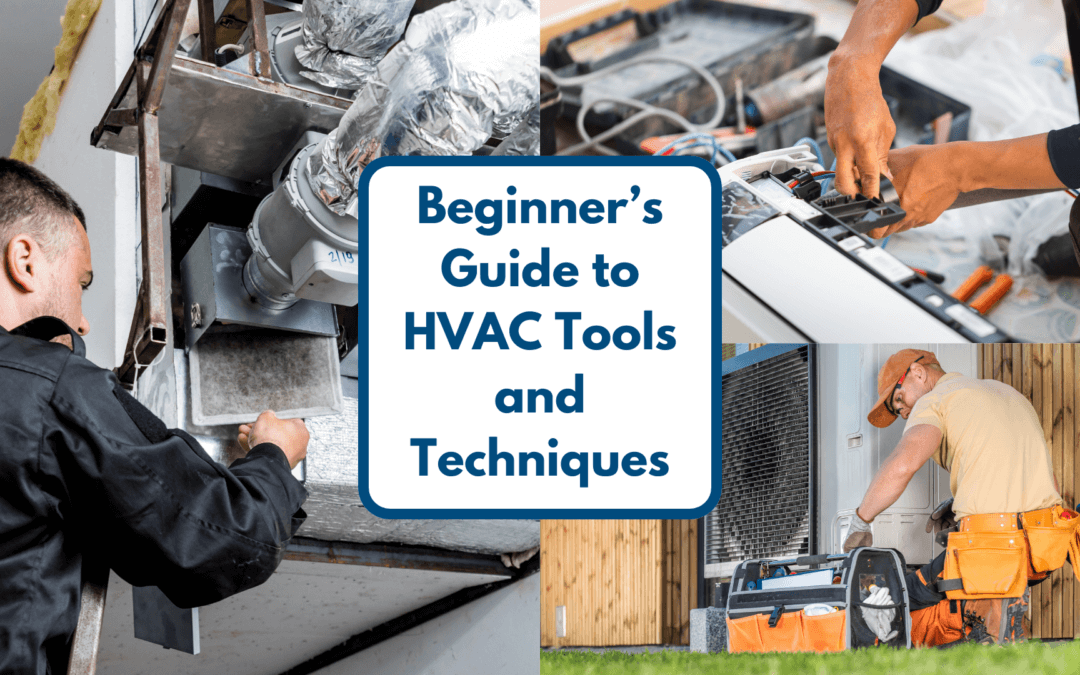Stepping into the world of HVAC (Heating, Ventilation, and Air Conditioning) can be exciting and rewarding. HVAC technicians play a critical role in ensuring indoor comfort, energy efficiency, and air quality. Whether you’re just starting out or considering HVAC as a career, understanding the essential tools and techniques is your first step toward success.
This beginner’s guide will help you navigate the fundamentals, explore key tools of the trade, and equip you with tips to develop your skills.
Why Start a Career in HVAC?
The HVAC industry offers a wide range of opportunities, from residential maintenance to commercial installations. As homes and businesses prioritize energy efficiency and climate control, demand for skilled HVAC technicians continues to grow.
If you’re exploring a career path that combines problem-solving, hands-on work, and job stability, HVAC might be the perfect fit. For additional guidance on breaking into skilled trades, check out the Breaking Barriers Book—a resource designed to help aspiring professionals navigate challenges and build successful careers.
Essential HVAC Tools for Beginners
HVAC work requires a mix of basic hand tools, specialized equipment, and safety gear. Here’s a breakdown of the most critical tools for new technicians:
Basic Hand Tools
- Screwdrivers: Flathead and Phillips for working on panels and components.
- Wrenches: Adjustable and open-end wrenches for loosening and tightening fittings.
- Pliers: Needle-nose, channel-lock, and wire-cutting pliers for gripping, bending, and cutting.
- Tape Measure: For precise measurements when installing or repairing units.
- Hammer: For securing ductwork and other components.
Specialized HVAC Tools
- Manifold Gauge Set: Used to measure and adjust refrigerant pressure in systems.
- Vacuum Pump: Removes air and moisture from refrigeration systems before charging.
- Pipe Cutter: For cutting copper, PVC, or other pipes cleanly.
- Refrigerant Recovery Machine: Safely removes and stores refrigerants during repairs or replacements.
- Thermometers and Hygrometers: Measure temperature and humidity levels to ensure optimal system performance.
Electrical Testing Tools
- Multimeter: Measures voltage, current, and resistance in HVAC systems.
- Clamp Meter: Diagnoses electrical issues in motors or compressors.
- Voltage Tester: Verifies live circuits to ensure safety during repairs.
Safety Gear
- Gloves: Insulated or heat-resistant gloves to protect against sharp edges or electrical components.
- Safety Goggles: Shields eyes from debris, refrigerant sprays, or sparks.
- Respirator or Dust Mask: Protects against dust and chemical fumes.
Ductwork Tools
- Sheet Metal Shears: For cutting and shaping ductwork.
- Crimpers and Seamers: Used to assemble and secure duct sections.
- Duct Tape and Mastic Sealant: Seal connections to prevent air leaks.
For a more detailed overview of tools, visit the HVAC page on ToolFinder.
Core HVAC Techniques for Beginners
1. Understanding System Components
Every HVAC system consists of key components, including:
- Furnace or Heat Pump: Provides heating.
- Air Conditioner: Delivers cooling.
- Ductwork: Distributes air throughout the building.
- Thermostat: Controls temperature settings.
Familiarizing yourself with these components is essential for diagnosing issues and performing repairs.
2. Proper Refrigerant Handling
Refrigerant is a critical part of HVAC systems but must be handled carefully. Learn how to:
- Recover and recycle refrigerant safely.
- Use gauges and recovery machines effectively.
- Comply with EPA regulations for refrigerant management.
3. Efficient System Installation
Installing HVAC systems requires precision and attention to detail:
- Measure spaces accurately to ensure proper system sizing.
- Follow manufacturer guidelines for installing ductwork and units.
- Test the system thoroughly to ensure functionality.
4. Routine Maintenance and Troubleshooting
Preventive maintenance keeps systems running efficiently. Key tasks include:
- Replacing filters to improve air quality.
- Cleaning coils and ducts to enhance performance.
- Checking for leaks, loose connections, and wear in system components.
5. Diagnosing Common Issues
HVAC technicians must be adept at identifying and fixing problems, such as:
- No Cooling or Heating: Often caused by refrigerant issues or faulty thermostats.
- Poor Airflow: Indicates ductwork obstructions or dirty filters.
- Unusual Noises: Can signal mechanical issues or loose parts.
Tips for Aspiring HVAC Technicians
1. Pursue Training and Certification
Enroll in a reputable HVAC program to build foundational knowledge. Obtain certifications like:
- EPA Section 608 Certification: Required for handling refrigerants.
- NATE Certification: A widely recognized credential for HVAC professionals.
2. Gain Hands-On Experience
Seek internships or apprenticeships to practice real-world skills. On-the-job training is invaluable for learning installation, maintenance, and repair techniques.
3. Invest in Quality Tools
Starting with reliable tools will make your work more efficient and reduce frustrations. As your skills grow, you can expand your toolkit with advanced equipment.
4. Stay Updated on Industry Trends
The HVAC field evolves with advancements in energy efficiency, smart technology, and eco-friendly systems. Subscribe to trade magazines or join HVAC communities to stay informed.
5. Build a Network
Networking with other professionals, contractors, and mentors can open doors to job opportunities and valuable advice. Consider joining trade organizations like the Air Conditioning Contractors of America (ACCA).
Why Choose ToolFinder for Your HVAC Journey?
At ToolFinder, we’re passionate about helping tradespeople succeed by providing insights, resources, and tools tailored to their needs. Whether you’re selecting your first set of tools or looking to refine your techniques, our guides and spotlight pages are here to support you.
Start exploring with our HVAC page to dive deeper into essential tools, safety tips, and industry insights.
Final Thoughts
Embarking on a career in HVAC offers endless opportunities to learn, grow, and make a meaningful impact. With the right tools, training, and mindset, you can build a strong foundation and set yourself up for long-term success.
And don’t forget to check out the Breaking Barriers Book for additional tips on overcoming challenges and thriving in skilled trades.
